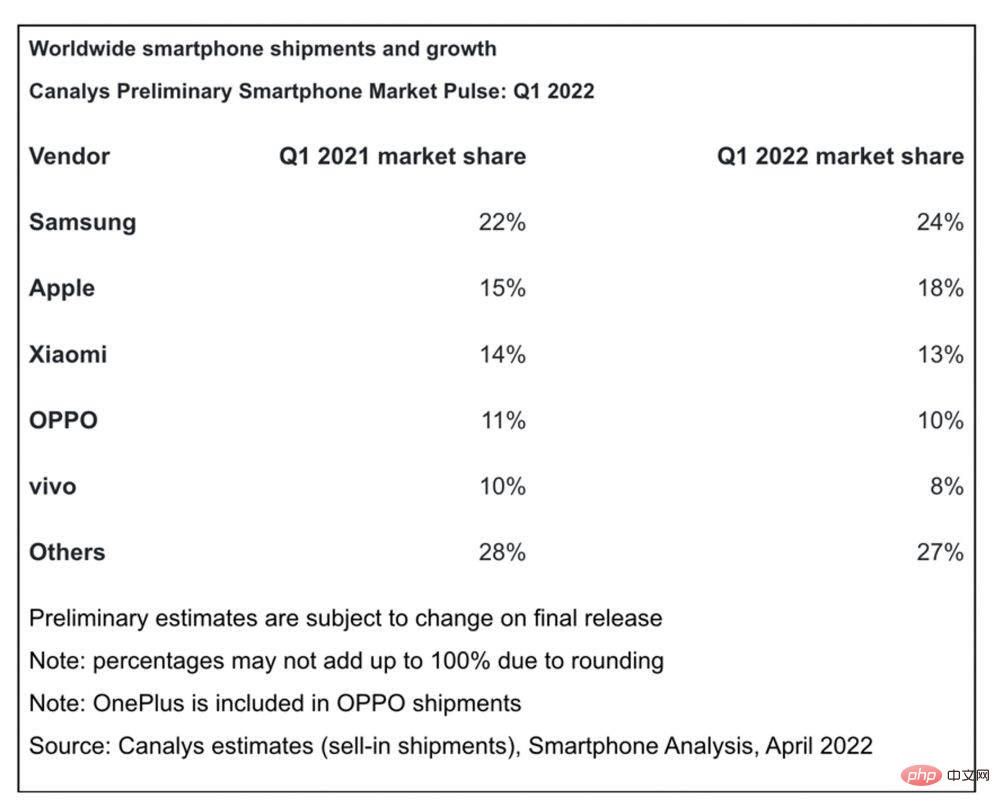Home >Common Problem >Global smartphone shipments drop 11%, while iPhone 13 demand still rises
Global smartphone shipments drop 11%, while iPhone 13 demand still rises
- WBOYWBOYWBOYWBOYWBOYWBOYWBOYWBOYWBOYWBOYWBOYWBOYWBforward
- 2023-04-19 10:40:021445browse
New data from Canalys shows that global smartphone shipments fell by 11% due to unfavorable market conditions. Demand remains slow in 2022 amid unfavorable market conditions.
Samsung leads with 24% market share, while Apple is in second place with 18% market share. Xiaomi ranked third with a 13% share, driven by the success of the Redmi Note series. OPPO and vivo, which manufacture OnePlus, ranked fourth and fifth respectively.
Despite ongoing uncertainty, these smartphone makers have found ways to stay relevant by expanding their device portfolios this year. Samsung, for example, revamped its A series to continue to be popular low- to mid-range phones.
"While the iPhone 13 series continues to capture consumer demand, the new iPhone SE launched in March is becoming an important mid-range sales driver for Apple. It offers an upgraded chip at a similar price point to its predecessor and improved battery performance, and increased 5G connectivity required by operator channels."
Canalys analyst Sanyam Chaurasia
Canalys reported, "The global smartphone market was weighed down by unstable business conditions in the first quarter."
Market sees surge in COVID-19 cases due to Omicron variant, despite minimal hospitalizations and vaccine High vaccination rates help normalize consumer activity quickly. Suppliers face significant uncertainty due to Russia's war with Ukraine, China's rolling blockades and the threat of inflation. All of this adds to traditionally slow seasonal demand.
Despite reports that iPhone SE 3 sales are underperforming, Canalys’ data appears to be different. A new survey reports that US carriers are seeing lower demand for the iPhone SE 3 than for the iPhone SE 2. Canalys went on to note that smartphone manufacturers "must equip themselves to respond quickly to emerging opportunities and risks."

The above is the detailed content of Global smartphone shipments drop 11%, while iPhone 13 demand still rises. For more information, please follow other related articles on the PHP Chinese website!

